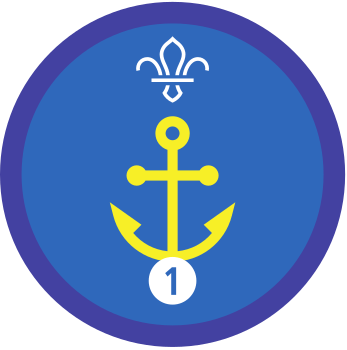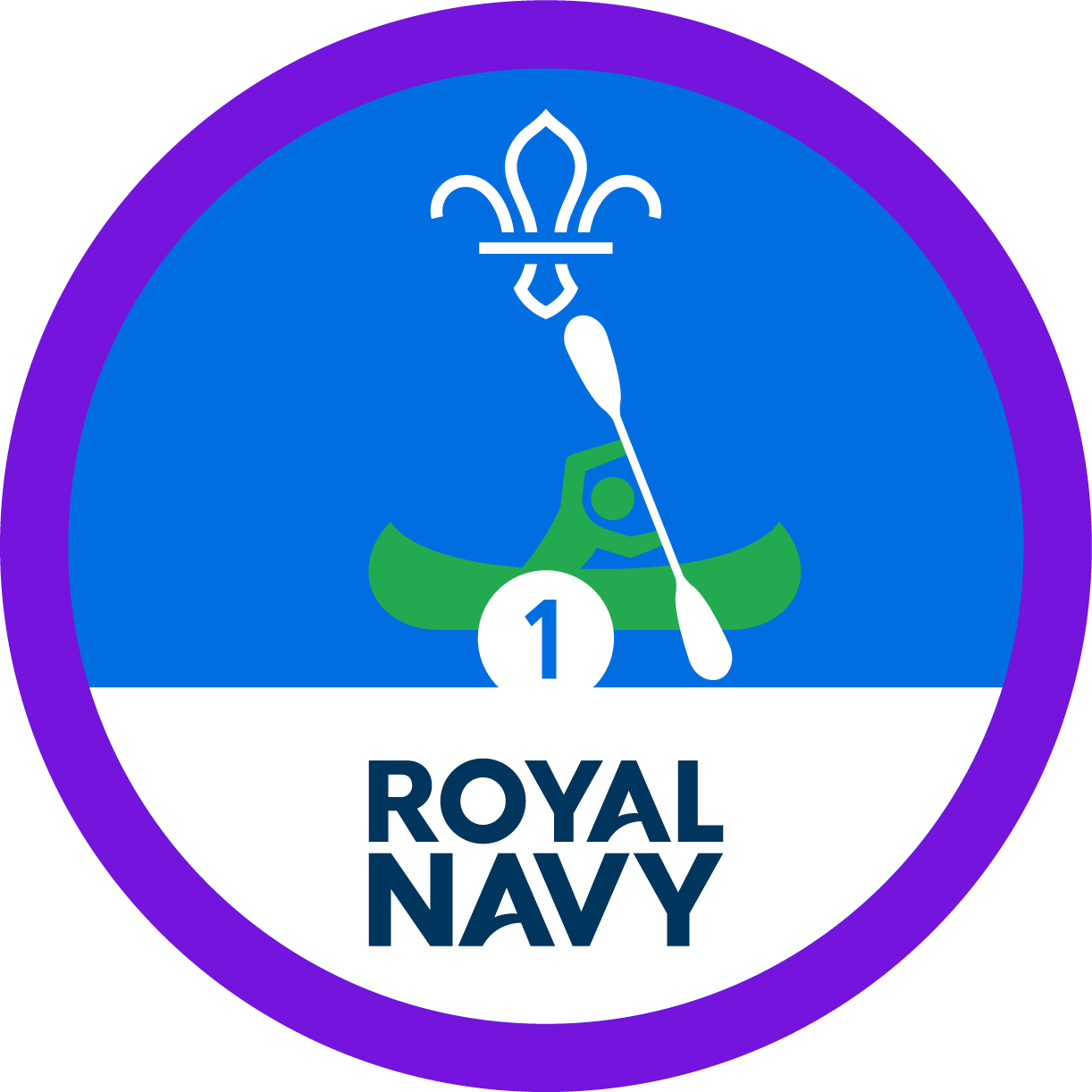
Play Canoe Polo
You’ll need
- Kayak
- Paddles
- Helmets
- Buoyancy aid
- Ball that floats
- Whistle
Before you begin
- Use the safety checklist to help you plan and risk assess your activity. Additional help to carry out your risk assessment, including examples. Don’t forget to make sure all young people and adults involved in the activity know how to take part safely.
- Make sure you’ll have enough adult helpers. You may need some parents and carers to help if you’re short on helpers.
Canoe Polo’s a competitive water sport blending canoeing and ball handling. Teams are made up of five players and despite the name of canoe, they paddle in closed top kayaks. The aim of the game is to score the most goals by manoeuvring a ball into the opposing team's net. It requires teamwork, strategy and good communication in a fast-paced, thrilling aquatic competition. You can find out more on the Canoe Polo UK website
- This game’s designed for when you’re kayaking. Everyone will need to know the basics of kayaking, such as how to paddle or what to do if you fall out, before playing. Take a look at our Kayaking guidance.
- Always have a safety briefing before running this activity. Remind everyone they should always have a firm grip on their paddle and be aware of the space around them.
- Make sure the outdoor area you visit is accessible for everyone, choosing a suitable place for drop off and collection. You may need to think about avoiding steps or steep gradients or including frequent breaks. Check for additional hazards, such as rocks, overhanging branches, and risks of slips and trips, including surfaces.
- Check the forecast and sunset times, but be prepared for the weather to change. It’s best to run this activity on lighter evenings, such as in summer.
- Make sure everyone knows where and when to meet, and knows what to bring. People should come dressed for the weather and activity, being prepared for the weather to change. Ask everyone to bring a spare set of clothes, towels and spare shoes. Remember, wellies aren’t suitable for water sports.
- Make sure you’ve an emergency signal to get participants attention quickly and urgently, such as a whistle.
- The playing area should be a designated water space with clearly marked goals at each end. Goals could be Buoys or natural features, such as a tree or bench. The size of the playing area can vary based on available space, but it should be large enough to allow for everyone to move in easily and for gameplay.
Running this activity
- Gather everyone together and ask if everyone’s heard of canoe polo. Explain that they will be playing a variation of the sport with a mini game, the aim of the game is to score the most goals against the opposing team. Explain how to play, what the rules and boundaries are.
- Ask everyone to them into teams of five, though this can be adjusted as needed for your group size.
- Have a safety briefing and explain what your emergency stop signal is. For example, you might want to have a bell, a key word or whistle to get everyone’s attention to stop. This would not want to be confused with the play whistle used during the game.
- Each match lasts 20 minutes. The match is split into two halves, with a halftime break in the middle. This can be used for getting a drink or rethinking your team’s tactics. When you’re ready, each team should line up with the back of their kayaks touching the goal line.
- To start the game, the referee should blow the whistle and throw the ball into the centre of the playing area. The players from each team can now paddle to try to get the ball.
- Once a player has the ball, they can only hold it for a maximum of 5 seconds. They must then try to pass it to a teammate or throw it away from them and paddle after it.
- Opposing players can attempt to stop passes or steal the ball by blocking with their kayaks or using paddles.
- Goals are scored by throwing the ball into the opposing team's goal. If you’re using goal lines, a goal is scored by paddling over the line with the ball. The entire ball must cross the goal line to count as a point.
- The referee should call a foul if there’s physical contact, someone tries to obstruct another player, or if anyone deliberately pushes or capsizes someone. The referee can award free throws. You may also suspend the player from taking part in the game.
- After 10 minutes, the referee should blow the whistle and teams can have a break for halftime.
- After halftime, the teams can switch sides and keep playing for another 10 minutes.
- The winning team’s the one with the most goals at the end of the game
Reflection
This activity was all about kayaking. This was about learning a new sport, but it’s also about kayaking technique and confidence. What was it like playing the game? Did it help you practice your kayaking skills? Did you learn anything new? What did you like about the game? What didn’t you like about the game?
You also had to work as a team and communicate. How did you work together? Did you have a plan or strategy? How did you communicate? Did you do anything to work together, such as one person distracting the other team? Did you make sure everyone in your team took part and could throw the ball? Did anyone not get chance to join in or not get the ball? What could your team do better at next time?
You could use this game to practice your kayaking. This may have boosted your confidence. Was it a good way to get confident on the water? Did people enjoy playing? Do people think games are a good way to practise skills? Was it a fun way to exercise? If you were nervous, did the game take your mind off the water or paddling? How could we make the game harder, sillier or more fun? We could add in other games or challenges that focus on skills, such as stopping, starting, and turning.
Safety
All activities must be safely managed. You must complete a thorough risk assessment and take appropriate steps to reduce risk. Use the safety checklist to help you plan and risk assess your activity. Always get approval for the activity, and have suitable supervision and an InTouch process.
- Near water
Manage groups carefully when near water. The guidance on activities near water will help you to keep your group safe.
- Water games and activities
Be careful when doing activities with, in, or near water. Check surfaces and reduce the risk of slipping where possible. Make sure you have appropriate supervision for this activity.
- Active games
The game area should be free of hazards. Explain the rules of the game clearly and have a clear way to communicate that the game must stop when needed. Take a look at our guidance on running active games safely.
- Contact games and activities
Make sure everyone understands what contact is acceptable, and monitor contact throughout the activity.
- To make it easier, you could lower the goal, make the playing area smaller or allow the ball to be held for longer.
- To make it harder, you could make the playing area bigger, make the goal smaller, use fewer players, add in a third team or create your own additional rules.
- If anyone struggles with throwing and catching, you could let players hold the ball for longer. You may also choose to use a larger and/or lighter ball, such as a beach ball.
- If anyone needs extra support, players could play in pairs on double kayaks. One person could focus on paddling and the other could focus throw or catch the ball as needed. This also means an adult or young leader could help support someone.
- Anyone who can’t or doesn’t like kayaking could be the referee or help keep track of the scores. Many outdoor centres have kayaking equipment and facilities that cater for people with additional needs. They also have experienced instructors to help everyone achieve their goals. Get in touch with your local provider to chat through the needs of people in your group – make sure you give them plenty of notice.
All Scout activities should be inclusive and accessible.
If you enjoyed this activity, try our other kayak activities or our Paddle Sports Staged Activity Badge. Anyone who’s keen on kayaking could check out British Canoeing for information on training and awards
Young people could try making a version of their favourite game that they can play on the water.


